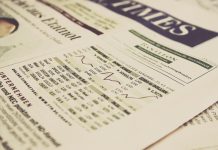
Job growth may slow down from 2020 to 2029, according to the US Department of Labor. Some 16.3 million workers were jobless as of July.
The department expects a deterioration in the active labor force as well as an aging population.
The Bureau of Labor Statistics sees a net 6 million new jobs in the next decade, which is an annual growth rate of just 0.4%.
The figure compares with the 1.3% annual rate during the 2009-19 period. This is attributed to a boost from the Great Recession recovery that began in mid-2009 and became the longest expansion in history before it closed in February of this year.
Moreover, the slow growth rate does not cover the effects of the coronavirus pandemic, which led to more than 25 million job losses initially before workers resumed as restrictions loosened to fight Covid-19.
According to the Labor Department, some 16.3 million workers were still unemployed as of July, around 11 million more than the pre-pandemic level.
The government agency stressed that the coronavirus could lead to “new structural changes to the economy” and will be taken into consideration for in future predictions.
Job creation
Job creation will not also accelerate as demographics change and productivity expands partly due to technological changes.
Job gains may be felt in health care, which accounts for five of the top 20 sectors expected to experience the quickest growth. The Labor Department predicts healthcare support roles to add 1.6 million positions through 2029, indicating a 22.6% increase. Food preparation and serving occupations may soar by 1 million, though that could change due to the coronavirus crisis.
Professional, businesses and scientific service fields may see growth amid tech advancements, while community and social service is predicted to record a 12.5% increase in jobs. Computer and mathematical roles are expected to have a 12.1% boost.
Data shows that manufacturing will lose 448,800 jobs due to “the loss of manufacturing jobs include the adoption of new productivity-enhancing technologies, such as robotics and international competition.”
Based on the latest prediction, the labor force participation rate may fall from 63.1% in 2019 to 61.2% in 2029.
Unemployment rate
The Congressional Budget Office or CBO predicts that the unemployment rate in the US would not recover from the coronavirus pandemic quickly.
CBO pointed out that even if economies are already reopening, the next decade will be a challenging one.
Moreover, CBO’s prediction reflects uncertainty in terms of the coronavirus itself, shifting consumer preferences, and policy responses.
The CBO predicts the unemployment rate will stay above its pre-pandemic level until after 2030. The 10-year average unemployment rate is at 6.1%, up from 4.2% predicted in January.
Meanwhile, US GDP is predicted to have an average 3.4% lower over the next decade than what was initially forecasted in January. GDP is only expected to grow in line with long-term trend growth again by 2028.
Based on April projections, this recession could further deepen the federal budget deficit in 2020, reaching $3.7 trillion.






